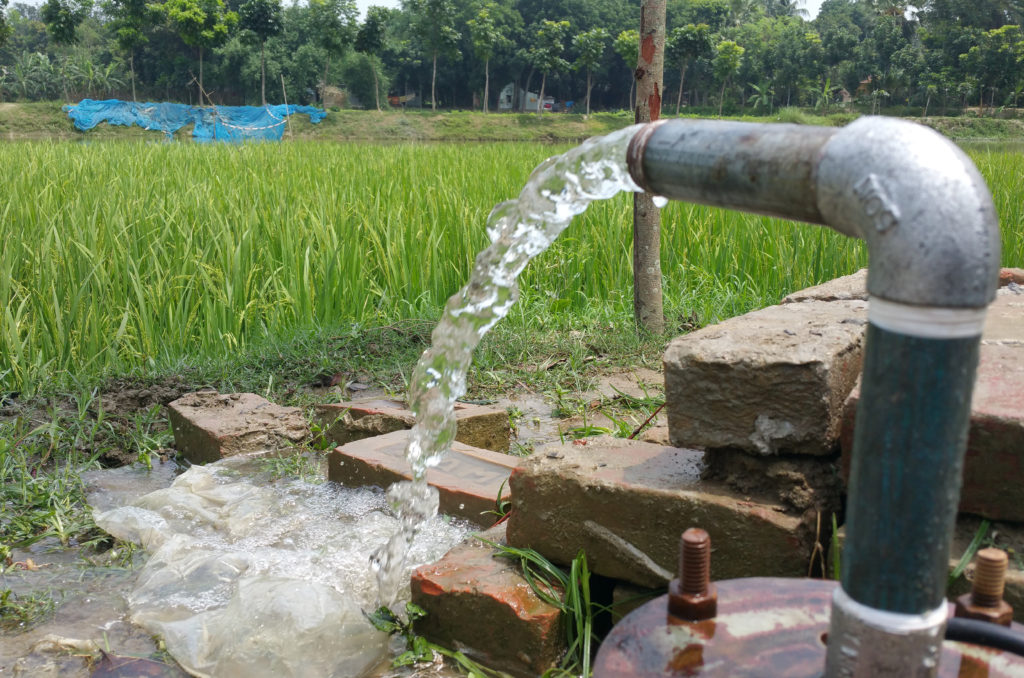Agriculture is the single largest producing sector of Bangladesh since it comprises about 18.6 of the country’s GDP and employs around 45% of the total labor force. Although rice and jute are the primary crops, wheat is assuming greater importance. Tea is grown in the northeast. Because of Bangladesh’s fertile soil, rice can be grown and harvested three times a year in many areas with proper irrigation and agricultural practice. In our country agricultural practices directly depend on irrigation. In 1990, the total water withdrawal for agricultural, domestic and industrial purposes was estimated at about 14.64 km³, of which about 86 percent for agriculture. In Bangladesh, the expansion of minor irrigation (small-scale irrigation) is a vital component of the Government’s agriculture strategy. Irrigation through major canals (large-scale irrigation) covers only 6 percent of the total irrigated area, the remainder being classed as minor irrigation consisting of low lift pumps (LLPs: power operated centrifugal pumps drawing water from rivers, creeks and ponds), shallow tube-wells (STWs: with a motorized suction mode pumping unit), deep tube-wells (DTWs: with a power operated force mode pumping unit), manually operated pumps (MOPs: extracting water from a shallow tube-well) and traditional systems. According to The Daily Star report (2015), the country has 1.61 million irrigation pumps where 1.34m are run by diesel and 0.27m by electricity. Diesel pumps consume 1 million tons of diesel worth $900 million a year. Increasing price hike of fuel and electricity is one of the most concerning issue of recent times. Government is also trying to promote solar irrigation system through Idcol from last few years. But under Idcol’s solar irrigation programme, pumps with 5-11 kWp capacity and dynamic head ranging from 10-18 metres are being used which are very costly and beyond the affordability of local small community farmers and tribal communities. In 1995, the total area equipped for full/partial irrigation covered by large irrigation schemes (major irrigation) was 10% and small irrigation schemes coverage was 90%. In this regard, we also need to develop small or micro scale solar irrigation schemes for the farmers of grid and off-grid areas.
Our Solutions:
In this regard we have designed 2000-3000 watt solar irrigation pump systems utilizing locally available submersible pumps, solar panels and inverters. Design of the plants depend on ground water level, discharge requirement and other variables. Depending on the location, needs and requirements of our clients we offer the best AC or DC solutions.

